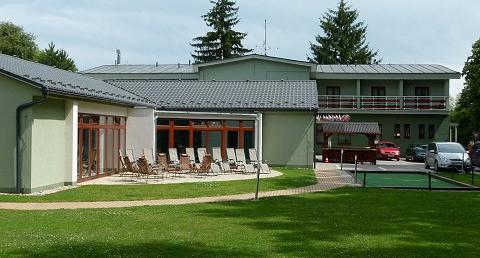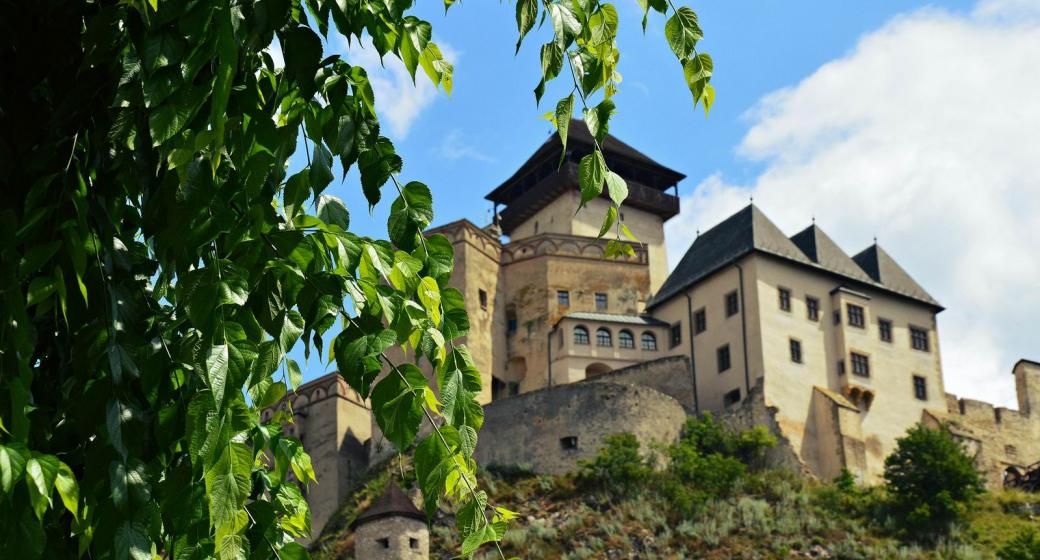


Although our column is called "At the end of the region", this was not always the case. This time we went to the imaginary border of two regions - Trenčianske and Trnava. We took a look at the village of Očkov, which is quite remote, but the locals feel like one big family.
When you take the old road from Nové Mesto nad Váhom and pass through Čachtica and Podolí, the information board will show you a turn to the left. After about 300 meters you will pass a sign with the inscription Očkov. We are coming to a place that many would say "even crows turn" here. However, the opposite is true. Autumn is in full swing and one cyclist after another passes by us.
But beware, the home team especially enjoys football. "For such a small village, we play in the sixth league. We didn't do well this year, but two years before that we were in first place. Even bigger villages are afraid of us. We have a high-quality team, three experienced players are from home," adds mayor Miroslav Beňovič, who also held the position of student coach in the past.
By the way, the name of the village is derived from its founders, the noble Očkaj family. In 1991, Očkov was declared a national cultural monument, because the mound there is literally unique in the world. According to historians, it is the oldest burial ground in Central Europe. There are graves from the period of 3500 BC. The fortified castle of the Kuruk general Ladislav Očkaj belongs to the Middle Ages, from which the so-called A bloody tavern. It got its name from a rumor that describes more people going in than going out. The period of the Second World War is represented by two German bunkers. It is a single machine gun nest that was supposed to slow down the advance of the Red Army at the end of the war. From the most recent history is the house of Ms. Tillerová and Mr. Nižňanský, who conscientiously took care of the mound. Later, the mound decayed for a long time. "For its reconstruction, we had a study done, we drew up a project. In the end, they did not fulfill even one of all the requests. It's a shame because it's a pretty significant landmark. In other countries, it would certainly make a beautiful tourist attraction. It could also be nicely connected with the Park of Miniatures in Podolí or with Čachtický hrad. The road is not very busy, so it is often used by cyclists. It would be an attraction," emphasizes the mayor. Unique finds from the burial ground are also proof of the possessions of the deceased: a bronze serpentine needle, remains of armour, helmet, shield, sword, spear and horse harness. A bowl covered with solid gold, a whole set of bronze vessels and gold jewelry were even found. Everything is stored in the Archaeological Institute of the Slovak Republic in Nitra or in museums throughout Slovakia. "It is difficult for the municipality itself to do anything about it. There is no chance without subsidies. We would need 300,000 to 400,000 euros for that, and we cannot afford that from the municipal budget. At least we started to cooperate with OZ Tematín, but they also don't have that much time to come here all the time. We cleaned it up a bit, mowed it, fenced it. We got an old tile for the old house, so we are trying to maintain it on our own," says Miroslav Beňovič. He is lucky that in a village with almost 500 inhabitants they can help each other. The community here works as a unit. "Even now we made a playground. I announced on the radio that there would be a brigade, that we needed to spread gravel, and people came," praises the home team's first man Očkov. Within the microregion, the construction of cycle paths is in progress. The plan includes a cycle path around the Dubová stream, which will connect Piešťany, Veľké Orvište, Bašovce, Pobedim, Podolie, Častkovce and Čachtice. "It would be nice to connect all the surrounding villages with cycle paths. It just licks us. In Austria, Germany or the Netherlands, it is common for there to be a cycle path next to the road. But above all, it is safe. A narrow cycle path was also built between Podolí and Častkovci. You won't believe how many children are there on skates or bicycles," says Miroslav Beňovič. The village recently celebrated its 700th anniversary. "This year it was already 701 years ago, but due to the coronavirus, we celebrated the birthdays only recently. It was a nice event, it just happened with the opening of the children's playground," recalls the mayor, who also plays his own accordion with the local singing group.
On the municipal coat of arms, on a red background, there is a large golden left-angled bunch of grapes with a silver stem and two small gold leaves, accompanied to the left by a left-angled silver vineyard knife with a gold handle. "There used to be vineyards here, a lot of grapes were grown. I don't know what varieties they had then, but it was called Očkovské bago. That is a proper ozembuch, Mr. Augustíni brought it from Italy. Now grapes are grown mostly for own consumption," smiles the mayor. In the center of the village, the Chapel of St. Cyril and Methodius, which was built in the 19th century and is decorated with a neoclassical facade, is also interesting. In close proximity to it stands a Marian column in the baroque style, on which a statue of the Madonna is placed.
He recognized Očkov from the balloon
Although it lies at the end of the region, it can be discovered not only from the ground, but also from a bird's eye view. "Očkov is a popular place to live for people from the neighborhood. One gentleman even discovered it from a balloon. When he saw it, he said he wanted to live here. He found a house, bought it and settled here," reveals the mayor. Next to the houses are parked e-bikes from all over Slovakia – Poprad, Pezinok and Bratislava. "It makes me a little sad that such a peaceful village has become a shanty town. When an old house is for sale, it is often bought by people who only come here for the weekends. So we have a lot of people here who do not have a permanent residence in Očkov, so the municipality receives share taxes," explains Miroslav Beňovič. However, the important thing is that if a person looks into Očkov, he will find nice people who can help each other. They don't mind that they are literally at the end of the county, they don't feel that way at all. And that is important.

Oddych v prekrásnom prírodnom prostredí myjavských kopaníc. . Strávte víkend v…

HISTÓRIA. Na mieste dnešného hradu stálo v období Veľkej Moravy hradisko ako správne…